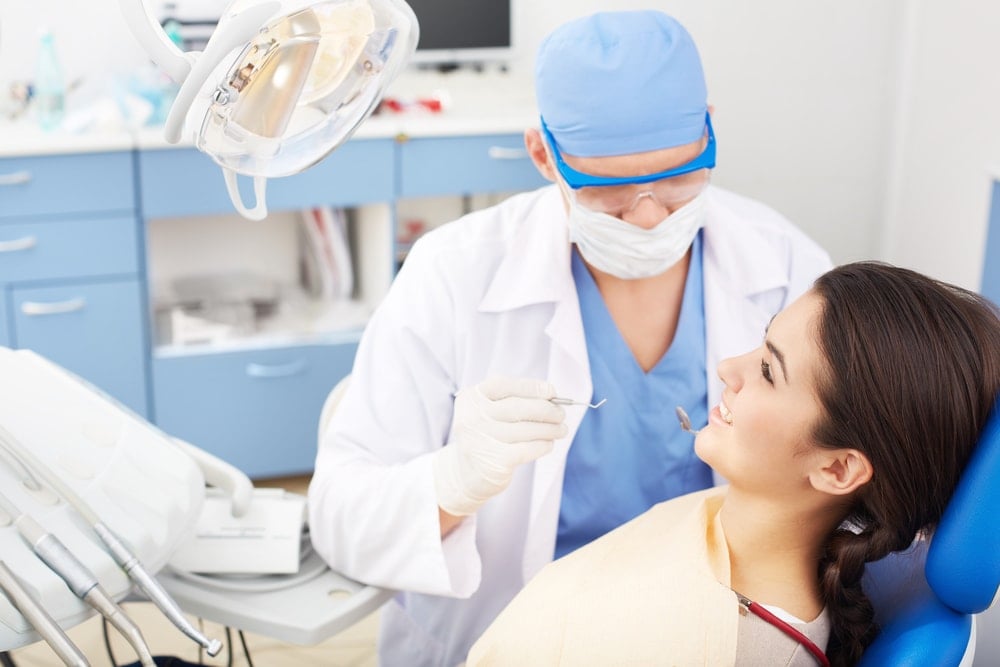Is Having Dental Work While Pregnant Safe?
Pregnancy and dental work questions are common for expecting moms. Preventive dental cleanings and annual exams during pregnancy are not only safe but are recommended. The rise in hormone levels during pregnancy causes the gums to swell, bleed, and trap food causing increased irritation to your gums.
Preventive dental work while pregnant is essential to avoid oral infections such as gum disease, which has been linked to preterm birth.
Toothaches in pregnancy and other dental needs
Dental work while pregnant, such as cavity fillings and crowns, should be treated to reduce the chance of infection. If dental work is done during pregnancy, the second trimester is ideal. Once you reach the third trimester, it may be very difficult to lie on your back for an extended period of time.
However, sometimes emergency dental work, such as a root canal or tooth extraction, is necessary. Elective treatments, such as teeth whitening and other cosmetic procedures, should be postponed until after the birth. It is best to avoid this dental work while pregnant and avoid exposing the developing baby to any risks, even if they are minimal.
What about the medications?
Currently, there are conflicting studies about possible adverse effects on the developing baby from medications used during dental work. Lidocaine is the most commonly used drug for dental work. Lidocaine (Category B) does cross the placenta after administration.
If dental work is needed, the amount of anesthesia administered should be as little as possible, but still enough to make you comfortable. If you are experiencing pain, request additional numbing. When you are comfortable, the amount of stress on you and the baby is reduced. Also, the more comfortable you are, the easier it is for the anesthesia to work.
Dental work often requires antibiotics to prevent or treat infections. Antibiotics such as penicillin, amoxicillin, and clindamycin, which are labeled category B for safety in pregnancy, maybe prescribed after your procedure.
Are dental x-rays safe?
Routine x-rays, typically taken during annual exams, can usually be postponed until after the birth. X-rays are necessary to perform many dental procedures, especially emergencies. According to the American College of Radiology, no single diagnostic x-ray has a radiation dose significant enough to cause adverse effects in a developing embryo or fetus.
According to the ADA and ACOG, having dental X-rays during your pregnancy is considered safe with appropriate shielding.
Some women may elect to avoid dental work during the first trimester knowing this is the most vulnerable time of development. However, there is no evidence suggesting harm to the baby for those electing to visit the dentist during this time frame.
Also, if non-emergency dental work is needed during the third trimester, it is usually postponed until after the birth. This is to avoid the risk of premature labor and prolonged time lying on your back.
Suggestions for addressing your pregnancy and dental work needs:
- The American Dental Association (ADA) recommends pregnant women eat a balanced diet, brush their teeth thoroughly with ADA-approved fluoride toothpaste twice a day, and floss daily.
- Have preventive exams and cleanings during your pregnancy.
- Let your dentist know you are pregnant.
- Postpone non-emergency dental work until the second trimester or after delivery, if possible.
- Elective procedures should be postponed until after the delivery.
- Maintain healthy circulation by keeping your legs uncrossed while you sit in the dentist’s chair.
- Take a pillow to help keep you and the baby more comfortable.
- Bring headphones and some favorite music.
Want to Know More?
Compiled using information from the following sources:
1. William’s Obstetrics Twenty-Second Ed. Cunningham, F. Gary, et al, Ch. 41.
2. American College of Radiologists
3. American Dental Association
https://www.ada.org/
4. Planning Your Pregnancy and Birth Third Ed. The American College of Obstetricians and Gynecologists, Ch. 7.
5. American College of Obstetricians and Gynecologists
6. American Thyroid Association






